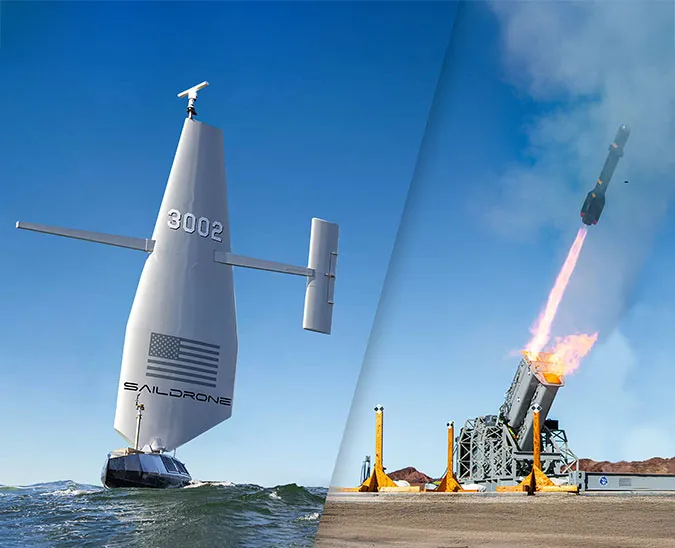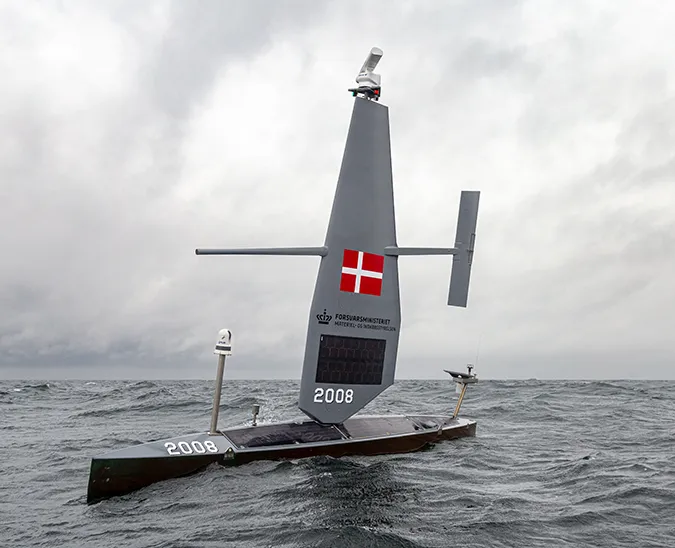Published on
Author
Every evening, as life on land is settling in for the night, the ocean comes alive with billions of organisms—plankton, crustaceans, and small fish—migrating toward the sea surface in search of food. This mass movement is known as the diurnal (daily) vertical migration and it’s the largest migration on Earth in terms of biomass. Saildrone joined the Monterey Bay Aquarium Research Institute (MBARI)’s Controlled, Agile, and Novel Observing Network (CANON) experiment, a multiplatform effort to give scientists a better understanding of how these nightly commuters adapt to changing conditions in the ocean ecosystem.
“We want to understand how to best combine these technologies so that the sum is greater than what you could get from any one thing,” said Katie Pitz, a biological oceanographer and CANON project manager.
This year’s CANON experiment was launched from the Monterey Accelerated Research System (MARS) deep-sea observatory, some 20 nautical miles offshore of Monterey. The variety of vehicles—surface gliders, autonomous underwater vehicles, deep-see hydrophones, moored buoys, and Saildrone unmanned surface vehicles (USVs)—allows researchers to sample the migration using sound, video, and environmental DNA. Traditional ship-based sampling methods were also used.

“Saildrone nicely complemented our autonomous vehicles and ships. Given its speed and autonomy, it provided large-scale surveys at the beginning and end of the experiment as well as continuous larger-scale information during the experiment. This information will provide context for our smaller scale, intensive data collection efforts,” said Francisco Chavez, senior scientist at MBARI.
The Saildrone USV, known as SD 1038, was equipped with a Simrad EK80 echo sounder in addition to the standard Saildrone sensor suite. The science-grade echo sounder sends a sound pulse through the water and measures the sound waves echoing back from fish; fish abundance can be mapped as the saildrone makes repeated measurements along a designated transect or on station. Saildrones are powered by wind for propulsion and solar to run the onboard instruments, which makes them virtually silent as they move through the water and non-disruptive to the organisms they seek to study.
“Since this was our first experience with Saildrone we were not exactly sure what to expect. In retrospect, Saildrone exceeded our expectations in terms of the size of the payload, speed, data quality, and user interface. We also gained an appreciation of the limitations of using an autonomous sailing vessel in terms of reliance on wind and turning relative to wind direction. Our overall experience with saildrones at MBARI has been very good. We have been primarily interested in the bioacoustics data capability and the product delivered was of high quality. Working with the Saildrone team was a pleasure,” added Chavez.

Saildrones have been used on a variety of fisheries missions from measuring the abundance of Arctic cod in the Chukchi Sea to studying the temporal-spatial dynamic of fish aggregations and school formations of sandeel and saithe in the North Sea. In September, Saildrone wrapped up the 2019 West Coast Survey which collected data on commercially valuable hake and smaller coastal pelagic species and in October, two saildrones equipped with acoustic receivers were tracking tagged Alaska red king crab in the Bering Sea.
The organisms that make up the diurnal vertical migration do so under the cover of night presumably for protection; they are food for marine mammals, seabirds, and larger fish. By studying the abundance and behavior of these tiny organisms at the base of the food chain, scientists and researchers can better manage marine resources, which are increasingly under threat from commercial fisheries and rising ocean temperatures.
Resources
Monterey Bay Aquarium Research Institute, “Spring 2019 CANON experiment explores Earth’s largest migration,” May 29, 2019.





